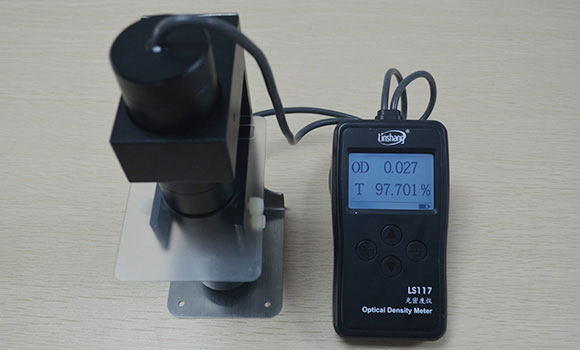Light Transmittance Meter | Electronic Dimming Glass Principle
With the rapid development of modern glass technology, the development of the glass industry is also changing rapidly. Various functional glasses made with new principles, new technologies and new processes are constantly emerging. At the same time, people's demand for energy saving and aesthetics of glass are becoming more and more urgent. In summer, people want to keep sunlight out as much as possible; in winter, people want more sunlight to enter indoors. Therefore, dimming glass came into being and the emergence of dimming glass is a change to the simplification and transparency of ordinary glass.

The light transmittance of dimming glass has been the focus of attention of major manufacturers and users. In the power off and power-on state, the light transmittance of the dimming glass is different. The light transmittance meter LS117 can be used to test the light transmittance of the dimming glass. Especially when the dimming glass is not energized, the glass is opalescent, matte or mist. The light transmittance data tested with a common light transmittance meter is low. Linshang LS117 light transmittance meter use diffuse transmission principle which can replace integrating sphere has high accuracy when detecting the dimming glass light transmittance.
Dimming glass is classified according to its basic working principle. It can be divided into: photochromic, electronic color changing, temperature color changing, pressure color changing, etc. This article mainly introduces one of dimming-electronic dimming glass.
1. Principle of electronic dimming glass
(1) Use voltage to change the arrangement of liquid crystal molecules
A liquid crystal film layer is sandwiched between two pieces of glass. When energized, the excellent performance of liquid crystal rearrangement can be adjusted at any time with the intensity of incident light to meet the lighting requirements for rooms, reception halls, projection halls, etc. The basic structure of liquid crystal dimming glass is to disperse some small liquid crystal cells of several microns in the glass collective, sandwiched between transparent conductive films, forming a special sandwich structure.
When there is no applied voltage, the liquid crystal molecules are arranged randomly. When the light is irradiated to the glass, the light is subjected to strong scattering, so the transparency of the glass disappears. The liquid crystal molecules are aligned to the glass surface and the light can be directly transmitted to show transparency. The light transmittance of dimming glass products of different manufacturers is different. You can use the Linshang light transmittance meter LS117 to detect the light transmittance of dimming glass.
(2) Use electric field changes to change transmittance
The glass using this principle is composed of basic glass and electronic color changing system. The tunability of light transmission performance caused by electrochromic materials under the action of an electric field can achieve the purpose of adjusting the light intensity by people's will, and at the same time, the electronic color-changing system selectively absorbs or reflects external heat radiation and prevents internal heat diffusion , Can reduce the large amount of energy consumed by buildings such as office buildings and civil residences to keep cool in summer and warm in winter. Therefore, the light transmittance of the dimming glass is different when the power is turned off and the power is turned on. An optical density light transmittance meter LS117 with an integrating sphere function is used to test the light transmittance of the dimming glass.
2. Light transmittance meter LS117 detects dimming glass
Light transmittance meter LS117 is an optical instrument using the principle of diffuse transmission. It is suitable for optical density testing of aluminum film, film, X-ray film, lens ink and other materials. It is also an advanced light transmittance meter with integrating sphere effect. This light transmittance meter is suitable for the transmission of opalescent translucent materials and matte material such as pattern or frosted glass, ceiling lampshade and other materials. The light source of the instrument conforms to the CIE photopic luminosity function standard, ensuring that it passes the inspection of the Chinese Metrology Institute. The light transmittance of dimming glass of different manufacturers is different.
- Linshang Insulated Glass Unit Measuring Tools
- Spectacle lens anti-blue light detection---blue-violet light transmittance meter
- Measurement of Optical Density
- Difference of LS116 Transmission & LS117 OD Meter
- Difference between LS116 and LS117 Light Transmittance Meter
- What’s the Difference Between Point Light and Parallel Light Transmittance Meter
